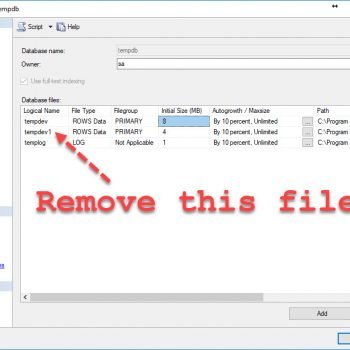This blog post will discuss 15 best practices for improving database performance. I have listed 14 best practices below. Read through them and let me know what you think should be the 15th best practice.

- Store only relevant and necessary data in the database
Avoid storing data in application structures or arrays when it belongs in the database. - Use normalized tables
Normalize your database to eliminate redundancy and maintain data integrity. Smaller, related tables are often better than one large table. - Create lookup tables for enumerated fields
For enumerated fields, use lookup tables to enforce consistency and maintain database integrity. - Use small and efficient primary keys
Choose short primary keys, such as integers or small character fields, to optimize performance. - Store image paths or URLs instead of images
Save image paths or URLs in the database and store the images in file storage to reduce overhead. - Select appropriate data types
Use precise data types for fields, such asDATETIMEfor date fields instead ofVARCHAR(20). - **Avoid SELECT ***
Specify column names inSELECTstatements to improve performance and readability. - Use LIKE clauses sparingly
When an exact match is required, use the=operator instead ofLIKEfor better efficiency. - Write SQL keywords in uppercase
Using uppercase for keywords such asSELECT,WHERE, andJOINenhances code readability. - Prefer JOINs over subqueries
UseJOINinstead of subqueries or nested queries for improved performance and clarity. - Utilize stored procedures
Stored procedures improve execution speed, simplify maintenance, and enhance security. - Comment and document your code
Add comments to your SQL scripts for clarity and as a guide for future developers. Proper application documentation is equally important. - Use proper indexing
Create and maintain indexes to improve query performance, keeping in mind the trade-off with write operations. - Test all changes thoroughly
Test any database programming or administrative changes in a non-production environment before deployment. - Monitor and optimize query performance
Use tools like SQL Server Profiler or Query Store to identify and optimize slow-performing queries. Regularly review execution plans to ensure efficient operations.
These practices will help you design, maintain, and optimize databases and for database performance and long-term reliability. Let me know your thoughts or if you have additional tips to share!
Reference: Pinal Dave (https://blog.sqlauthority.com)






108 Comments. Leave new
15) avoid concatenating multiple fields into a primary key. There are edge case exceptions, but avoid as much as possible.
#15 . follow proper naming standard for better design and readability
I have noticed a significant performance gain using a correlated subquery instead of an OUTER JOIN, such as:
SELECT C.CustomerName,
(SELECT City FROM Address WHERE Address.Entity_ID = C.Customer_ID) AS City
FROM Customer AS C
Rather than:
SELECT C.CustomerName, A.City
FROM Customer AS C
LEFT OUTER JOIN Address AS A
ON C.Customer_ID = A.Entity_ID
If multiple fields are required from Address, perhaps try OUTER APPLY.
Thanks for sharing this.
Leave us to be free to design (after the respective analysis correct) ourselves the database without impositions of chiefs or project leaders.
Keep enough free space in the server, user databases and tempdb. Drop unwanted indexes in the server
!5.1 Create a dedicated database for each application that coexists in the same Server
!5.2 Chose properly the Collation for database
Reindex and shrink the database periodically for better performance
Do not prefix your stored procedure names with “sp_”. The prefix sp_ is reserved for system stored procedure that ship with SQL Server. Whenever SQL Server encounters a procedure name starting with sp_, it first tries to locate the procedure in the master database, then it looks for any qualifiers (database, owner) provided, then it tries dbo as the owner.